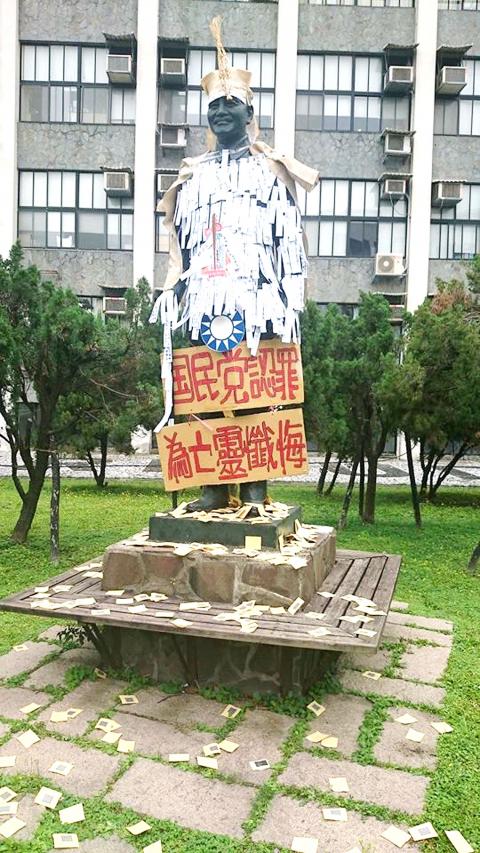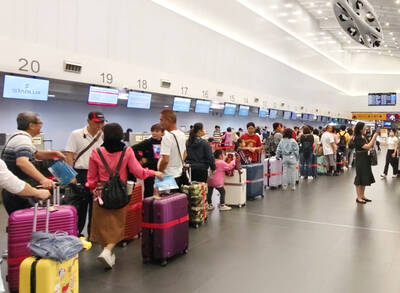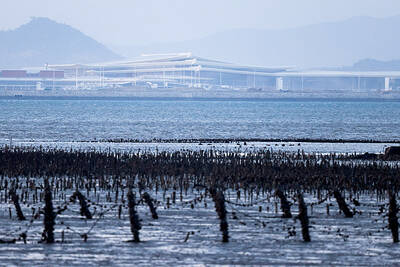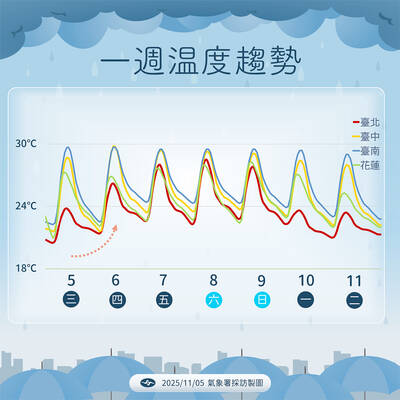With the 68th anniversary of the 228 Incident approaching, President Ma Ying-jeou’s (馬英九) administration has come under fire from Academia Sinica modern history researcher Chen Yi-shen (陳儀深), who said the administration is misrepresenting history and mitigating the Chinese Nationalist Party’s (KMT) responsibility for the 228 Incident.
The very nature of the 228 Incident, a historical tragedy that is the by-product of a clash of different ethnicities, is that it was a massacre of civilians by the KMT government, Chen said.
The 228 Incident refers to an uprising that began on Feb. 27, 1947, against the then-KMT authoritarian regime and the resulting brutal crackdown that left tens of thousands dead and led to nearly four decades of martial law.

Screen grab from Internet
The KMT government under then-Taiwan governor Chen Yi (陳儀) pursued a policy of demilitarizing local villages and arresting alleged criminals based on a list provided by villagers informing on each other, Chen Yi-shen said.
Many innocent people were implicated, and even some of the civilians who were on the committee handling the issue were later arrested, Chen Yi-shen said.
There was an element of using the Incident as a way to exact personal revenge, and the 228 Incident was in essence a vindictive slaughter by the KMT government, Chen Yi-shen said.

Photo: Ting Wei-chieh, Taipei Times
When Ma — in his capacity then as KMT chairperson — defined the event on the party’s Central Standing Committee meeting in 2006 as one in which the government had forced citizens into revolt and that it was not caused by ethnic differences, it was controversial and met with protests from many of the Incident’s victims, Chen Yi-shen said.
Ma’s comments represented a conscious effort to depart from the traditional KMT definition of the Incident, which was that it was a revolt sparked by communists, and that the military intervention was necessary to maintain the stability of Taiwanese society, Chen Yi-shen said.
The 228 Incident occurred as the KMT government was embroiled in its second civil war with the Chinese Communist Party.
However, Ma’s views on the Incident were subjective and could be said to distort the history of the Incident, as Ma is overlooking the evident ethnic conflicts in the incident, Chen Yi-shen said.
The 228 Incident stemmed from the KMT government officials, commonly called waishengren (外省人) to distinguish them from native Taiwanese, being unable to understand the local ethnic groups, as well as from the rampant corruption of KMT officials, Chen Yi-shen said.
That the government forced the civilians to revolt was only part of the Incident, Chen Yi-shen said.
Many innocent waishengren were also embroiled in the Incident, which causes many of the families of the Incident’s victims to find the Ma administration’s definition unacceptable, Chen Yi-shen said.

Three Taiwanese airlines have prohibited passengers from packing Bluetooth earbuds and their charger cases in checked luggage. EVA Air and Uni Air said that Bluetooth earbuds and charger cases are categorized as portable electronic devices, which should be switched off if they are placed in checked luggage based on international aviation safety regulations. They must not be in standby or sleep mode. However, as charging would continue when earbuds are placed in the charger cases, which would contravene international aviation regulations, their cases must be carried as hand luggage, they said. Tigerair Taiwan said that earbud charger cases are equipped

Foreign travelers entering Taiwan on a short layover via Taiwan Taoyuan International Airport are receiving NT$600 gift vouchers from yesterday, the Tourism Administration said, adding that it hopes the incentive would boost tourism consumption at the airport. The program, which allows travelers holding non-Taiwan passports who enter the country during a layover of up to 24 hours to claim a voucher, aims to promote attractions at the airport, the agency said in a statement on Friday. To participate, travelers must sign up on the campaign Web site, the agency said. They can then present their passport and boarding pass for their connecting international

UNILATERAL MOVES: Officials have raised concerns that Beijing could try to exert economic control over Kinmen in a key development plan next year The Civil Aviation Administration (CAA) yesterday said that China has so far failed to provide any information about a new airport expected to open next year that is less than 10km from a Taiwanese airport, raising flight safety concerns. Xiamen Xiangan International Airport is only about 3km at its closest point from the islands in Kinmen County — the scene of on-off fighting during the Cold War — and construction work can be seen and heard clearly from the Taiwan side. In a written statement sent to Reuters, the CAA said that airports close to each other need detailed advanced

UNKNOWN TRAJECTORY: The storm could move in four possible directions, with the fourth option considered the most threatening to Taiwan, meteorologist Lin De-en said A soon-to-be-formed tropical storm east of the Philippines could begin affecting Taiwan on Wednesday next week, the Central Weather Administration (CWA) said yesterday. The storm, to be named Fung-wong (鳳凰), is forecast to approach Taiwan on Tuesday next week and could begin affecting the weather in Taiwan on Wednesday, CWA forecaster Huang En-hung (黃恩鴻) said, adding that its impact might be amplified by the combined effect with the northeast monsoon. As of 2pm yesterday, the system’s center was 2,800km southeast of Oluanbi (鵝鑾鼻). It was moving northwest at 18kph. Meteorologist Lin De-en (林得恩) on Facebook yesterday wrote that the would-be storm is surrounded by